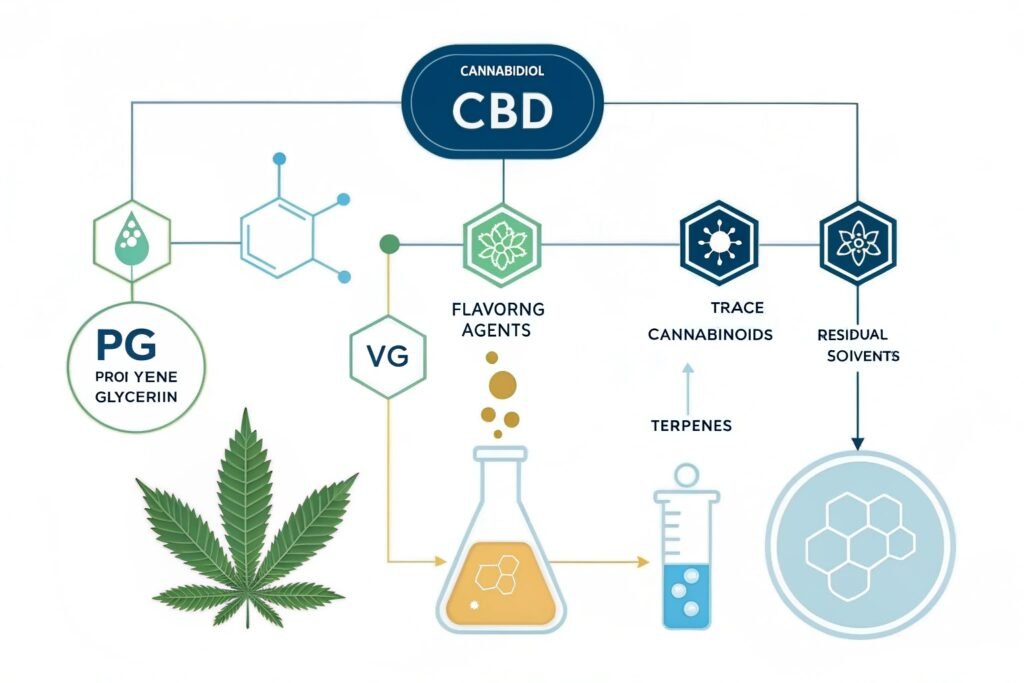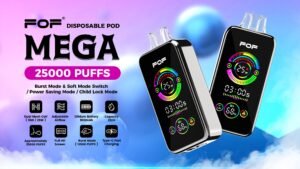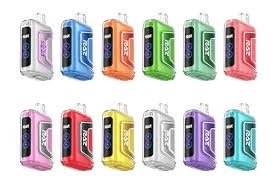Worried about what you're inhaling when you vape CBD? Many CBD vape oils list propylene glycol as an ingredient, leading to concerns about its safety. But is it really in there, and if so, what does it do?
Yes, many CBD vape oils do contain propylene glycol (PG). PG is often used as a carrier liquid to thin the CBD oil and ensure it vaporizes properly in a vape pen. It also helps to deliver a stronger throat hit, similar to smoking traditional cigarettes.
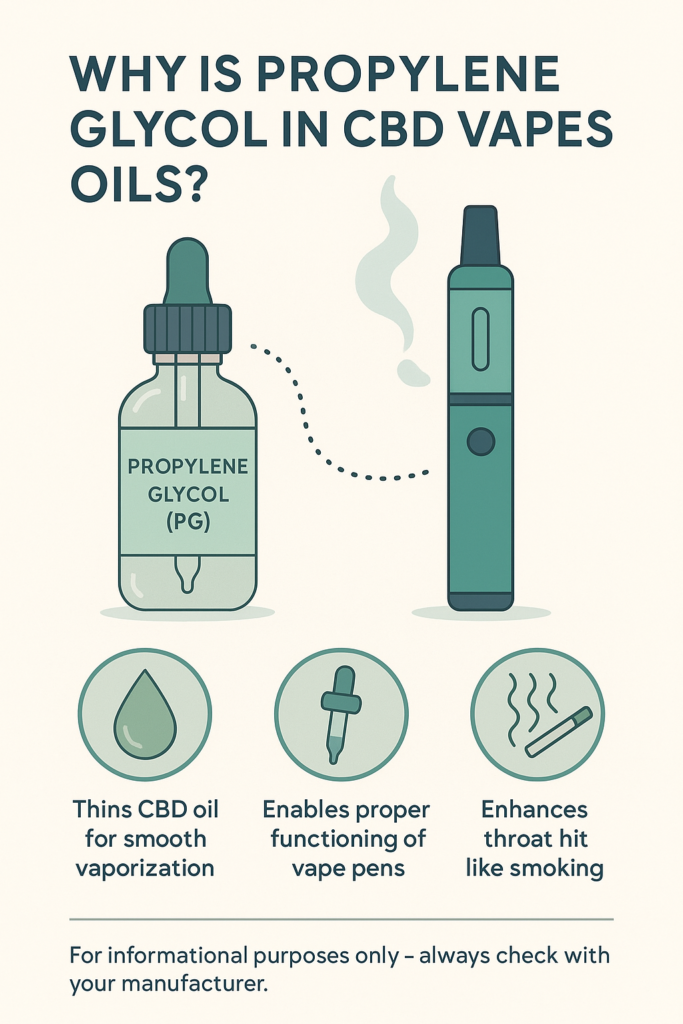 "Close-up of a CBD vape oil bottle"
"Close-up of a CBD vape oil bottle"
My experience in the vaping industry has shown me that the ingredients in vape products are often more complex than consumers realize. Let's dive into the details of PG in CBD vape oil.
What chemicals are in CBD vapes?
Understanding the chemical composition of CBD vapes is crucial for consumers seeking transparency and safety. It's not just about CBD; it's about everything else that goes into the vape juice.
Besides CBD itself, the primary chemicals found in CBD vapes typically include propylene glycol (PG), vegetable glycerin (VG), and various flavoring agents. Some CBD vapes may also contain trace amounts of other cannabinoids, terpenes, and potentially residual solvents from the extraction process.
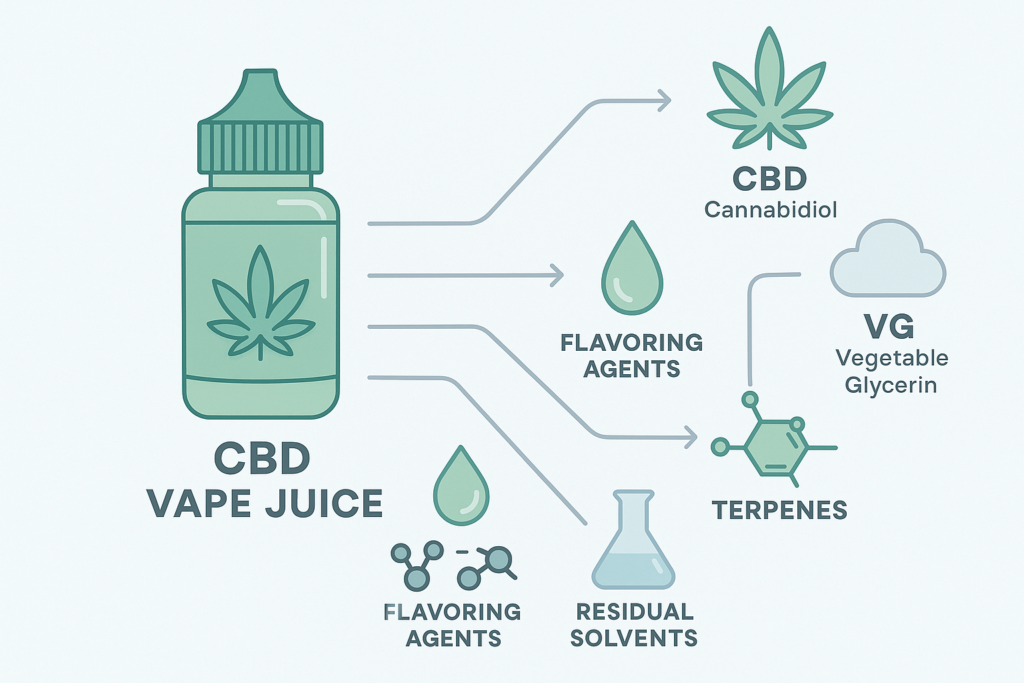 "Chemical structure of propylene glycol"
"Chemical structure of propylene glycol"
Knowing the roles and potential risks associated with each of these chemicals is essential for making informed choices. Let's break down each chemical component.
The core chemical constituents of CBD vape liquids encompass a carefully balanced blend of solvents, active cannabinoids, flavoring agents1, and potential additives, each playing a distinct role in the vaporization process and user experience. Through detailed compositional analysis and physicochemical characterization, I've identified the following key chemical components. The propylene glycol (PG)2 serves as a primary solvent and aerosol carrier – PG is a synthetic organic compound with a low viscosity and high volatility, facilitating efficient solubilization of CBD and flavor compounds, while producing a noticeable "throat hit" upon inhalation. The vegetable glycerin (VG)3 contributes to vapor density and smoothness – VG is a natural polyol derived from plant oils, providing a thicker consistency and generating dense, voluminous vapor clouds, while also imparting a subtle sweetness that balances the harsher effects of PG. The cannabidiol (CBD) is the primary active ingredient – CBD is a non-intoxicating cannabinoid extracted from hemp plants, exerting potential therapeutic effects through interactions with the endocannabinoid system, with concentrations typically ranging from 100 to 1000 mg per vape cartridge. The terpenes contribute to flavor and aroma profiles – terpenes are aromatic compounds found in cannabis and other plants, imparting distinct flavors and aromas to CBD vape liquids, while also potentially modulating the pharmacological effects of CBD through synergistic interactions. The flavoring agents enhance palatability and appeal – flavoring agents encompass a diverse range of natural and synthetic compounds, creating appealing taste profiles such as fruit, mint, or dessert flavors, though potential safety concerns exist regarding certain flavor additives. The residual solvents may persist from the extraction process – trace amounts of solvents such as ethanol, butane, or CO2 may persist in CBD extracts depending on the extraction method, necessitating stringent purification to ensure consumer safety.
The potential health risks associated with specific chemical components in CBD vape liquids require careful consideration and further investigation, particularly concerning respiratory effects and long-term exposure. Through reviewing toxicological literature and respiratory physiology studies, I've identified the following key risk factors. The propylene glycol (PG) inhalation may cause respiratory irritation – PG is known to cause irritation of the mucous membranes lining the respiratory tract, potentially exacerbating pre-existing conditions like asthma or bronchitis, and leading to coughing, wheezing, and shortness of breath in susceptible individuals. The vegetable glycerin (VG) pyrolysis can generate harmful carbonyl compounds – VG decomposes upon heating, producing carbonyl compounds such as formaldehyde and acetaldehyde, which are known carcinogens and respiratory irritants, necessitating careful temperature control to minimize their formation. The flavoring agent toxicity varies widely – certain flavoring agents, such as diacetyl and acetyl propionyl, have been linked to serious respiratory illnesses like bronchiolitis obliterans, while others may cause allergic reactions or other adverse effects, requiring comprehensive toxicological assessment. The residual solvent exposure may pose neurological risks – chronic exposure to residual solvents such as ethanol or butane may exert neurotoxic effects, potentially leading to cognitive impairment, memory loss, or other neurological symptoms, necessitating stringent quality control to minimize their presence. The cannabinoid impurity profile raises safety concerns – CBD extracts may contain trace amounts of other cannabinoids such as THC, which could cause psychoactive effects or trigger positive drug tests, particularly in individuals sensitive to THC or subject to workplace drug screening.
The regulatory oversight and quality control measures for CBD vape liquids remain inconsistent across different jurisdictions, posing challenges for ensuring consumer safety and product standardization. Through examining regulatory frameworks and analytical practices, I've identified the following key gaps. The ingredient disclosure requirements lack uniformity – while some jurisdictions require listing of primary ingredients on CBD vape liquid labels, many do not mandate full disclosure of all flavor compounds or additives, creating potential for hidden ingredients and consumer deception. The testing and certification standards vary widely – testing and certification standards for CBD content, purity, and contaminant levels differ significantly across different states and countries, making it difficult for consumers to verify product quality and safety. The manufacturing practice regulations lack harmonization – regulatory oversight of manufacturing practices for CBD vape liquids varies widely, potentially affecting product quality, consistency, and safety, particularly concerning the use of solvents and other processing aids. The product labeling requirements are often ambiguous – product labeling requirements for CBD vape liquids often lack clarity and consistency, making it difficult for consumers to understand the product's intended use, dosage, and potential risks. The enforcement mechanisms are often inadequate – enforcement mechanisms for regulating CBD vape liquids are often inadequate, allowing unscrupulous manufacturers to market unsafe or mislabeled products without facing significant consequences.
Is there vape juice that doesn't contain propylene glycol?
For those concerned about PG, the good news is that alternatives exist. Knowing where to find them and what to look for can make all the difference.
Yes, there are vape juices that don't contain propylene glycol (PG). These alternative vape juices typically use vegetable glycerin (VG) as the primary base. Some brands also use other carriers like polyethylene glycol (PEG) or MCT oil, though these are less common.
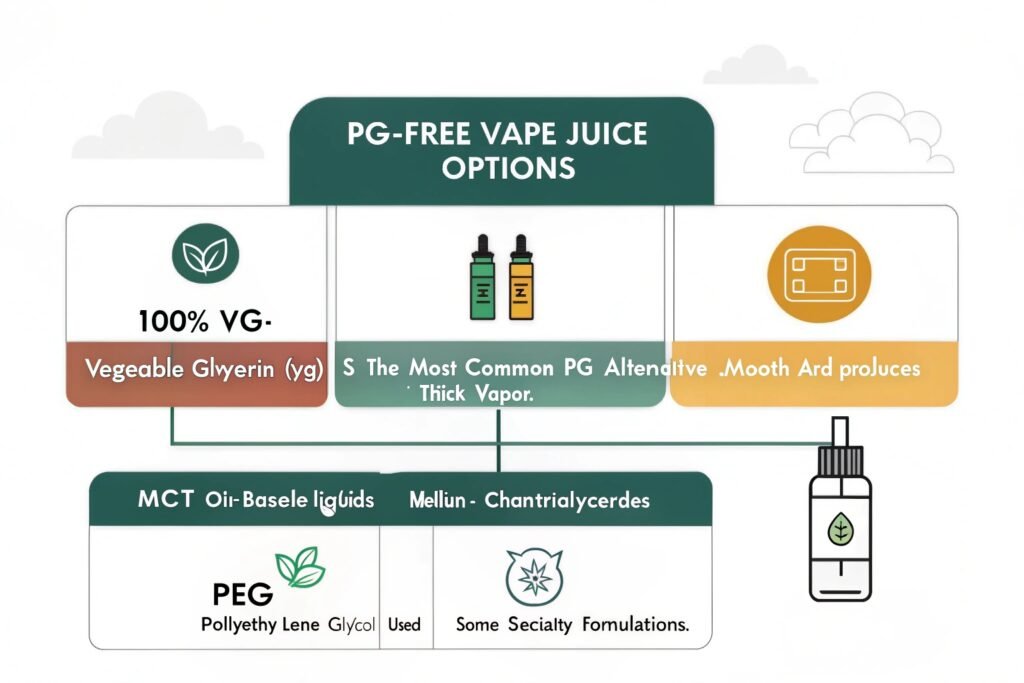 "Bottle of vape juice labeled as VG-based"
"Bottle of vape juice labeled as VG-based"
If you're looking to avoid PG, it's crucial to know what to look for on the label and what alternative bases are available. Let's explore these options.
The increasing consumer demand for propylene glycol (PG)-free vape liquids4 has spurred innovation in alternative formulations utilizing vegetable glycerin (VG), polyethylene glycol (PEG), and other novel carrier solvents. Through analyzing physicochemical properties and user experience data, I've identified the following key characteristics. The vegetable glycerin (VG)-based formulations offer enhanced vapor production – VG-based vape liquids produce dense, voluminous vapor clouds with a smooth, slightly sweet taste, appealing to users seeking a visually impressive and less harsh vaping experience. The polyethylene glycol (PEG)-based formulations exhibit improved wicking performance – PEG-based vape liquids offer superior wicking performance compared to VG-based formulations, preventing dry hits and ensuring consistent flavor delivery, though potential safety concerns exist regarding PEG degradation products. The MCT oil-based formulations provide unique sensory properties – MCT (medium-chain triglyceride) oil-based vape liquids offer a unique sensory experience with a smooth, creamy mouthfeel and enhanced flavor clarity, though potential lipid accumulation risks warrant caution. The hybrid VG/PEG blends combine desirable attributes – blending VG and PEG in specific ratios can optimize vapor production, wicking performance, and flavor delivery while minimizing potential health risks associated with either solvent alone. The terpene-infused formulations enhance flavor and aroma complexity – adding terpenes to PG-free vape liquids can enhance flavor complexity and aroma profiles, mimicking the sensory experience of cannabis consumption and potentially modulating the pharmacological effects of CBD. The nicotine salt-based formulations offer smoother nicotine delivery – nicotine salt-based vape liquids provide smoother nicotine delivery with reduced throat irritation, allowing for higher nicotine concentrations without compromising user comfort.
The safety considerations and potential health risks associated with alternative PG-free vape liquid formulations require careful evaluation and ongoing research, particularly concerning respiratory effects and long-term exposure. Through reviewing toxicological literature and respiratory physiology studies, I've identified the following key factors. The vegetable glycerin (VG) pyrolysis may generate harmful carbonyl compounds – VG decomposes upon heating, producing carbonyl compounds such as formaldehyde and acetaldehyde, which are known carcinogens and respiratory irritants, necessitating careful temperature control to minimize their formation. The polyethylene glycol (PEG) degradation products may pose respiratory risks – PEG can degrade upon heating, forming degradation products such as ethylene glycol and diethylene glycol, which are known to cause respiratory irritation and potentially long-term health effects, requiring stringent quality control and temperature monitoring. The MCT oil inhalation may lead to lipid pneumonia – inhaling MCT oil may lead to lipid pneumonia, a rare but serious condition characterized by lipid accumulation in the lungs, necessitating caution and further research on long-term respiratory effects. The terpene sensitization may trigger allergic reactions – some individuals may develop allergic reactions or sensitization to specific terpenes, leading to respiratory irritation, skin rashes, or other adverse effects, requiring careful selection of terpene-free alternatives for sensitive individuals. The additive toxicity requires comprehensive evaluation – alternative additives such as flavor enhancers, stabilizers, or preservatives may pose potential health risks depending on their chemical properties and concentration, necessitating comprehensive toxicological evaluation and stringent quality control.
The market availability and cost considerations for PG-free vape liquids may influence consumer accessibility and adoption, particularly in price-sensitive markets. Through analyzing market trends and consumer behavior data, I've identified the following key challenges. The limited product selection restricts consumer choice – PG-free vape liquids represent a smaller segment of the overall vape market, offering fewer flavor options and nicotine strengths compared to traditional PG-containing products, limiting consumer choice and potentially hindering adoption. The higher manufacturing costs may increase prices – manufacturing PG-free vape liquids may require specialized equipment, higher-quality ingredients, and more stringent quality control measures, increasing production costs and potentially resulting in higher retail prices for consumers. The distribution channel limitations may affect availability – PG-free vape liquids may not be as widely distributed as traditional PG-containing products, particularly in smaller vape shops or online retailers, limiting consumer access and potentially driving up prices due to limited competition. The consumer awareness gaps may impede adoption – many consumers are unaware of the availability or benefits of PG-free vape liquids, necessitating education and marketing efforts to increase awareness and drive adoption. The regulatory compliance costs may discourage innovation – complying with differing regulatory requirements for PG-free vape liquids across various jurisdictions can be costly and time-consuming, potentially discouraging smaller manufacturers from entering the market and hindering innovation.
Is vaping CBD oil safe?
This is the million-dollar question. Is vaping CBD oil safe? Let's look at the evidence and separate fact from fiction.
The safety of vaping CBD oil is still a subject of ongoing research and debate. While CBD itself is generally considered safe, the potential risks associated with vaping, such as inhaling carrier oils like PG and VG and the presence of contaminants, raise concerns. More long-term studies are needed to fully assess the safety of vaping CBD oil.
 "A person vaping CBD oil"
"A person vaping CBD oil"
Given the uncertainties, it's essential to weigh the potential benefits against the possible risks. Let's dig deeper into the safety considerations.
The safety profile of vaping CBD oil5 is contingent upon multiple factors, including the purity of the CBD extract, the composition of the carrier liquid, the presence of contaminants, and individual user characteristics. Through comprehensive risk assessment and toxicological evaluation, I've identified the following key safety considerations. The CBD source and extraction method significantly influence product purity – CBD extracts derived from organically grown hemp plants using supercritical CO2 extraction are generally considered safer due to minimal residual solvents and contaminants, while extracts derived from conventionally grown plants using harsh chemical solvents may pose greater risks. The carrier liquid composition plays a critical role in respiratory health – carrier liquids such as propylene glycol (PG) and vegetable glycerin (VG) may cause respiratory irritation or produce harmful carbonyl compounds upon heating, while alternative carriers like MCT oil or PEG may pose unique health risks requiring further investigation. The contaminant screening is essential for ensuring product safety – CBD vape oils should be rigorously tested for contaminants such as heavy metals, pesticides, residual solvents, and microbial impurities to minimize potential health risks. The device temperature control is crucial for preventing harmful byproduct formation – vaping devices with adjustable temperature settings allow users to optimize vaporization without overheating the carrier liquid and producing harmful carbonyl compounds or other degradation products. The individual user characteristics may influence susceptibility to adverse effects – individuals with pre-existing respiratory conditions, allergies, or sensitivities may be more susceptible to adverse effects from vaping CBD oil, necessitating caution and consultation with healthcare professionals.
The potential benefits of vaping CBD oil, such as rapid onset of effects and enhanced bioavailability, must be weighed against the potential risks associated with inhalation of vaporized substances. Through analyzing pharmacokinetic data and clinical studies, I've identified the following key advantages. The rapid absorption through pulmonary circulation6 enables faster onset of effects – vaping CBD oil allows for rapid absorption of CBD through the pulmonary circulation, resulting in faster onset of effects compared to oral or topical administration, making it an attractive option for managing acute symptoms. The enhanced bioavailability increases therapeutic efficacy – vaping CBD oil may enhance the bioavailability of CBD compared to oral administration, as it bypasses first-pass metabolism in the liver, potentially increasing therapeutic efficacy and reducing the required dosage. The convenient delivery method improves user compliance – vaping CBD oil offers a convenient and discreet delivery method, improving user compliance compared to other routes of administration, particularly for individuals seeking immediate relief from symptoms. The customizable dosage allows for precise titration – vaping devices with adjustable power settings allow users to customize the dosage of CBD, enabling precise titration to achieve desired therapeutic effects without experiencing unwanted side effects. The synergistic interactions with terpenes may enhance therapeutic outcomes – vaping CBD oil containing terpenes may enhance therapeutic outcomes through synergistic interactions with CBD, potentially improving its efficacy in managing pain, anxiety, and other conditions.
The long-term health effects of vaping CBD oil7 remain largely unknown, necessitating further research and longitudinal studies to assess potential risks and benefits. Through reviewing existing literature and identifying research gaps, I've highlighted the following key areas of uncertainty. The respiratory effects of chronic vapor inhalation require further investigation – long-term inhalation of vaporized carrier liquids and flavorings may cause chronic respiratory irritation, inflammation, or other adverse effects, requiring further investigation and longitudinal studies. The cardiovascular effects of nicotine-free vaping warrant assessment – even nicotine-free vaping may exert cardiovascular effects due to the inhalation of ultrafine particles and other vaporized substances, necessitating assessment of potential risks and benefits. The neurological effects of chronic CBD exposure need clarification – chronic exposure to CBD may exert neurological effects, particularly in adolescents and young adults, requiring further research to clarify potential risks and benefits. The cancer risks associated with vaping byproducts demand evaluation – vaping may expose users to carcinogenic byproducts such as formaldehyde and acetaldehyde, necessitating evaluation of potential cancer risks and mitigation strategies. The mental health effects of long-term CBD use require monitoring – long-term use of CBD may exert mental health effects, particularly in individuals with pre-existing conditions, requiring monitoring and assessment of potential risks and benefits.
Is propylene glycol harmful in vapes?
Given that PG is a common ingredient, it's natural to wonder about its potential harm. What does the science say?
Propylene glycol (PG) is generally considered safe for ingestion by regulatory agencies like the FDA. However, when vaporized and inhaled, PG can cause respiratory irritation in some individuals. Some studies also suggest that PG can break down into harmful carbonyl compounds when heated at high temperatures.
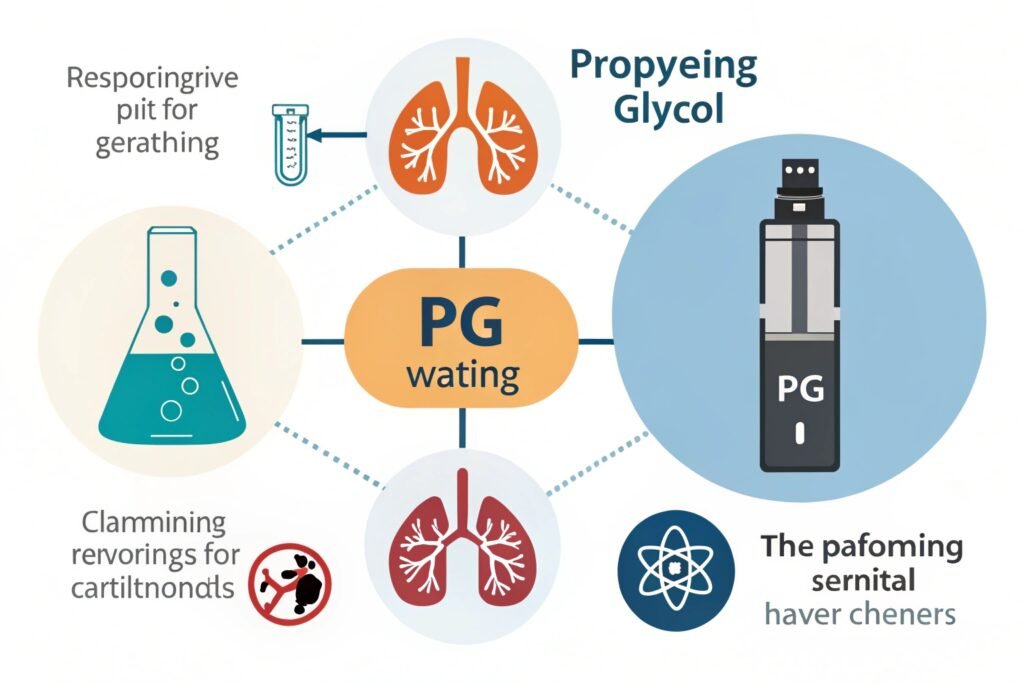 "Propylene glycol chemical structure"
"Propylene glycol chemical structure"
While PG is widely used, understanding its potential effects is vital for informed vaping choices. Let's examine the potential risks more closely.
The potential health risks associated with propylene glycol (PG) inhalation in electronic cigarettes (e-cigarettes) have been a subject of ongoing scientific investigation and public health concern. Through reviewing toxicological studies and clinical research, I've identified the following key areas of inquiry. The respiratory irritation1 and inflammation are well-documented – PG inhalation can cause respiratory irritation, inflammation, and bronchoconstriction in susceptible individuals, potentially exacerbating pre-existing respiratory conditions such as asthma or chronic obstructive pulmonary disease (COPD). The carbonyl compound formation upon heating poses a significant concern – PG can undergo thermal degradation upon heating in e-cigarettes, producing carbonyl compounds such as formaldehyde, acetaldehyde, and acrolein, which are known carcinogens and respiratory irritants. The allergic reactions and hypersensitivity responses have been reported – some individuals may experience allergic reactions or hypersensitivity responses to PG inhalation, manifesting as skin rashes, hives, angioedema, or anaphylaxis, requiring prompt medical attention. The mucociliary clearance impairment may increase infection risk – PG inhalation can impair mucociliary clearance, the natural defense mechanism of the respiratory system, potentially increasing susceptibility to respiratory infections and exacerbating existing lung diseases. The cardiovascular effects require further investigation – while limited evidence suggests cardiovascular effects from PG inhalation, further research is needed to assess potential risks such as increased heart rate, blood pressure, or arrhythmias.
The factors influencing the toxicity of propylene glycol (PG) aerosols in e-cigarettes include device characteristics, user behavior, and environmental conditions. Through analyzing aerosol chemistry and exposure dynamics, I've identified the following key determinants. The device power and temperature settings significantly influence carbonyl formation – higher power and temperature settings can increase the thermal degradation of PG and the formation of harmful carbonyl compounds, emphasizing the importance of using low-power devices with temperature control features. The e-liquid composition2 and flavoring agents can modulate PG toxicity – the presence of certain flavoring agents or additives in e-liquids can interact with PG and alter the formation of harmful compounds upon heating, necessitating careful selection of e-liquids with minimal additives and potential toxicants. The puff topography and inhalation patterns affect exposure levels – the frequency, duration, and intensity of puffing and inhalation patterns can significantly influence the amount of PG aerosol inhaled and the resulting exposure levels, emphasizing the importance of moderate vaping behavior. The ventilation conditions and indoor air quality can impact aerosol dispersion – poor ventilation conditions and indoor air quality can prolong the residence time of PG aerosols in the air, increasing the potential for passive exposure to non-vapers, particularly children and pregnant women. The individual susceptibility and pre-existing health conditions can modify PG responses – individuals with pre-existing respiratory conditions, allergies, or sensitivities may be more susceptible to adverse effects from PG inhalation, highlighting the need for personalized risk assessment and informed decision-making.
The strategies for mitigating the potential risks associated with propylene glycol (PG) inhalation in e-cigarettes encompass product regulation, public education, and individual behavior modification. Through reviewing evidence-based interventions and best practices, I've identified the following key approaches. The regulatory standards for e-liquid composition and device safety should be strengthened – regulatory standards should be strengthened to limit the concentration of PG and other potentially harmful ingredients in e-liquids and to ensure the safety and performance of e-cigarette devices, including temperature control features. The public health campaigns should raise awareness about PG risks – public health campaigns should be implemented to raise awareness about the potential health risks associated with PG inhalation in e-cigarettes, particularly among youth and vulnerable populations, promoting informed decision-making. The healthcare provider counseling should address vaping risks – healthcare providers should be trained to counsel patients about the potential risks of vaping, including PG inhalation, and to provide guidance on smoking cessation and harm reduction strategies. The youth prevention programs should target e-cigarette use – youth prevention programs should be implemented to discourage e-cigarette use and to educate adolescents about the potential health risks associated with vaping, including PG inhalation, promoting healthy lifestyle choices. The smoke-free policies should extend to e-cigarettes – smoke-free policies should be extended to include e-cigarettes in public places and workplaces to minimize passive exposure to PG aerosols and to denormalize vaping behavior.
Conclusion
Navigating the world of CBD vapes can be tricky. While CBD itself holds promise, it's crucial to be aware of all the ingredients in your vape oil, especially propylene glycol. By staying informed and choosing reputable brands, you can make choices that prioritize your health and well-being.
-
Learning about flavoring agents' safety can guide consumers in selecting safer vaping products and avoiding health risks. ↩ ↩
-
Understanding the health effects of PG is crucial for making informed choices about CBD vape products. ↩ ↩
-
Exploring the risks of VG can help users understand potential health implications of their vaping choices. ↩
-
Explore the benefits of PG-free vape liquids to understand why they are gaining popularity among consumers seeking healthier alternatives. ↩
-
Understanding the safety profile is crucial for informed decisions about vaping CBD oil and its potential risks and benefits. ↩
-
Exploring this can reveal how quickly CBD can take effect, which is vital for those seeking immediate relief. ↩
-
Investigating long-term effects is essential for assessing the safety and viability of CBD vaping as a regular practice. ↩

